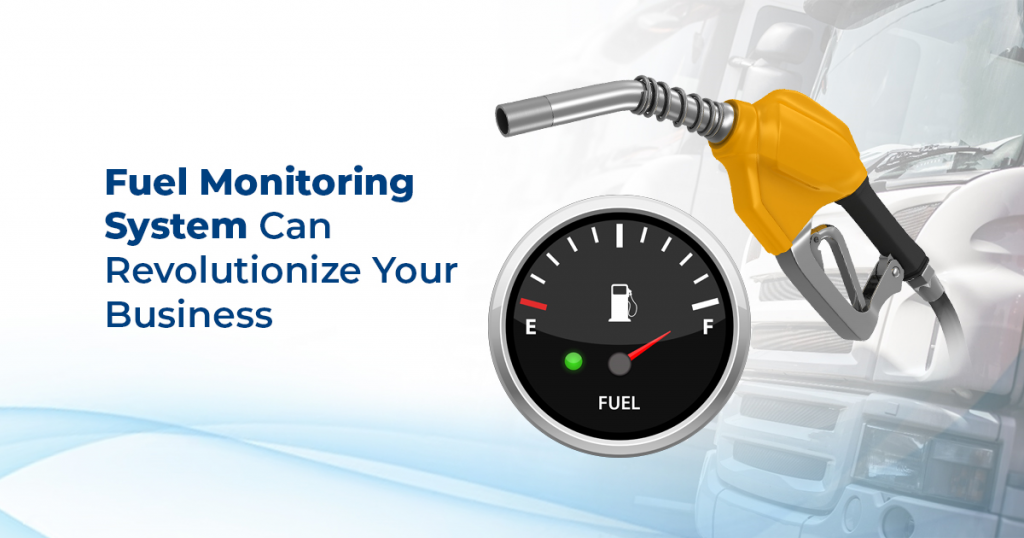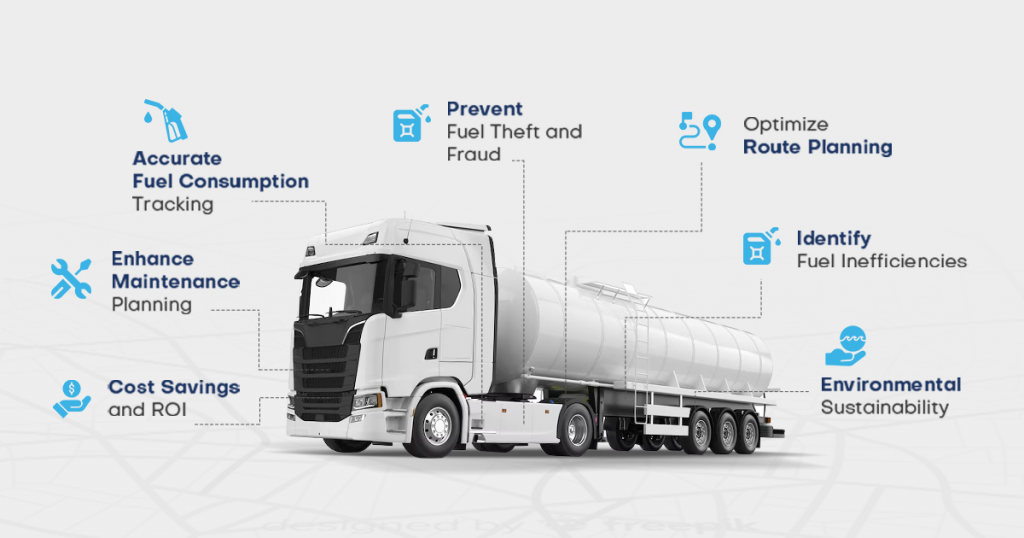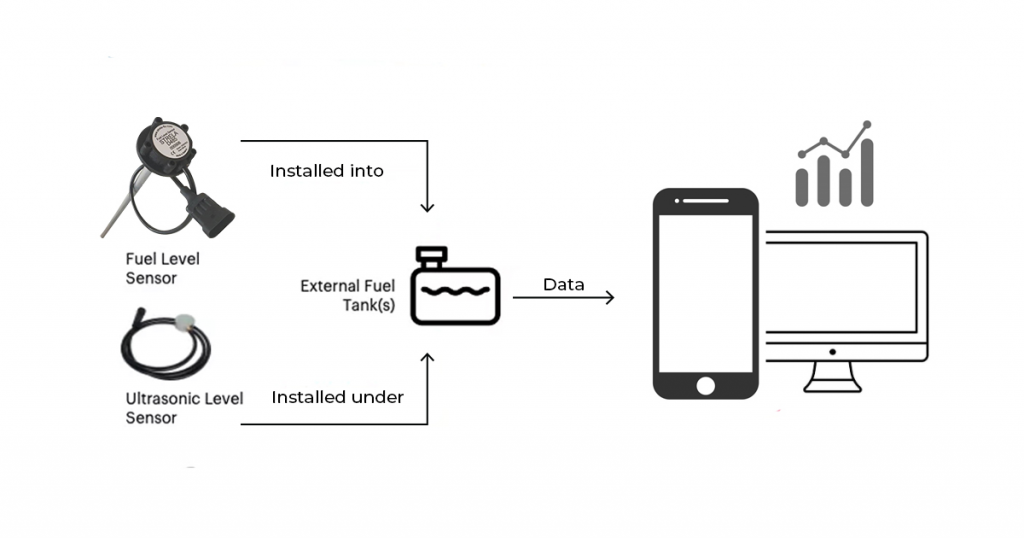The Future of Fuel Efficiency: How a Fuel Monitoring System Can Revolutionize Your Business

Fuel efficiency is a top priority for businesses looking to cut costs and reduce their environmental impact. In today’s competitive landscape, finding innovative ways to optimize fuel consumption can make all the difference. That’s where a fuel monitoring system comes in.
Introducing the future of fuel efficiency: a game-changing technology that has the potential to revolutionize your business. By accurately tracking fuel consumption, monitoring idle time, and identifying areas for improvement, a fuel monitoring system can help you maximize efficiency, minimize waste, and boost your bottom line.
With advanced analytics and real-time insights, this system empowers you to make informed decisions regarding fleet management, route planning, and maintenance. By identifying inefficient practices and implementing targeted improvements, you can significantly reduce fuel costs and increase profitability.
But the benefits go beyond financial gains. By reducing your carbon footprint and demonstrating a commitment to sustainability, you can improve your brand reputation and attract environmentally conscious customers. Embrace the future of fuel efficiency with a fuel monitoring system and drive your business towards success.
The challenges of traditional fuel monitoring methods
Traditional fuel monitoring methods often rely on manual data collection, which can be time-consuming and prone to errors. This approach involves keeping track of fuel receipts, manually calculating consumption, and relying on drivers to accurately report their mileage and fuel usage. Not only is this process cumbersome, but it also leaves room for inaccuracies and discrepancies.
Furthermore, traditional methods provide limited visibility into real-time fuel consumption and lack the ability to identify patterns or trends. Without access to accurate and timely data, businesses are unable to make informed decisions regarding their fuel consumption and identify areas for improvement. This can lead to unnecessary fuel costs, excessive emissions, and decreased operational efficiency.
What is a fuel monitoring system and how does it work?
Despite the numerous benefits of fuel monitoring systems, there are some common misconceptions that may deter businesses from adopting this technology. Let’s debunk a few of these misconceptions:
A fuel monitoring system is a comprehensive solution that combines hardware and software to accurately measure and track fuel consumption in real time. The system is typically installed in vehicles or equipment and collects data through sensors and other monitoring devices. This data is then transmitted to a centralized software platform, where it is analyzed and presented in a user-friendly interface.
The hardware components of a fuel monitoring system can vary depending on the specific needs of the business. They may include fuel level sensors, flow meters, GPS trackers, and onboard computers. These devices work together to collect data on fuel consumption, mileage, engine performance, and other relevant metrics.
The software component of a fuel monitoring system is equally important. It is responsible for processing and analyzing the data collected by the hardware, providing real-time insights, and generating reports. The software may offer features such as fuel consumption tracking, route optimization, maintenance scheduling, and driver behavior monitoring.

Benefits of using a fuel monitoring system for businesses
Implementing a fuel monitoring system can offer a wide range of benefits for businesses across various industries. Let’s explore some of the key advantages:
- Improved fuel efficiency: A fuel monitoring system provides businesses with accurate and real-time data on fuel consumption. By identifying inefficient practices, such as excessive idling or inefficient routes, businesses can make targeted improvements to maximize fuel efficiency. This can result in significant cost savings and reduced carbon emissions.
- Enhanced fleet management: With a fuel monitoring system, businesses gain valuable insights into their fleet operations. They can track the location, speed, and performance of their vehicles in real time, enabling better fleet management and optimized route planning. This not only improves efficiency but also enables businesses to respond quickly to any issues or emergencies.
- Reduced maintenance costs: A fuel monitoring system can help businesses identify maintenance issues before they become major problems. By monitoring engine performance and collecting data on vehicle diagnostics, businesses can implement timely maintenance and repair schedules. This proactive approach can help prevent costly breakdowns, extend the lifespan of vehicles, and reduce overall maintenance costs.
- Increased driver accountability: A fuel monitoring system allows businesses to track driver behavior, such as excessive speeding or harsh braking. By monitoring and analyzing this data, businesses can identify areas for improvement and provide targeted training to drivers. This promotes safer driving practices, reduces the risk of accidents, and can result in lower insurance premiums.
Improved sustainability and brand reputation: By implementing a fuel monitoring system and actively working towards reducing fuel consumption, businesses can demonstrate their commitment to sustainability. This can help improve their brand reputation and attract environmentally conscious customers. Additionally, reducing carbon emissions can contribute to a cleaner environment and a greener future.
Features to consider when choosing a fuel monitoring system
When choosing a fuel monitoring system for your business, it’s important to consider certain features that can enhance its effectiveness. Here are a few key features to look for:
- Real-time monitoring: The ability to track fuel consumption, vehicle location, and other relevant metrics in real time is crucial for making timely decisions and responding quickly to any issues or emergencies.
- Data analytics and reporting: The software component of the fuel monitoring system should offer advanced analytics capabilities, allowing businesses to analyze the collected data, identify trends, and generate comprehensive reports.
- Integration with other systems: Consider whether the fuel monitoring system can integrate with other existing systems, such as fleet management software or maintenance management systems. This ensures seamless data flow and enables businesses to leverage existing technologies.
- User-friendly interface: The software platform should have an intuitive and user-friendly interface that allows for easy navigation and quick access to the desired information. This ensures that all stakeholders, regardless of their technical expertise, can effectively use the system.
- Scalability: Consider whether the fuel monitoring system can accommodate the future growth of your business. It should be able to handle an increasing number of vehicles or equipment without compromising performance or data accuracy.
By considering these features, businesses can select a fuel monitoring system that best aligns with their specific needs and goals.
How to implement a fuel monitoring system in your business

Implementing a fuel monitoring system in your business involves several important steps. Here’s a general roadmap to guide you through the process:
- Assess your needs: Start by evaluating your current fuel management practices and identifying areas for improvement. Consider the size of your fleet, the type of vehicles or equipment you have, and the specific metrics you want to track.
- Research and select a system: Conduct thorough research to identify potential fuel monitoring systems that meet your needs. Consider factors such as cost, features, scalability, and customer reviews. Request demos or trials to evaluate the usability and effectiveness of the systems.
- Installation and setup: Once you have selected a system, work with the provider to install the necessary hardware components in your vehicles or equipment. Ensure that the sensors, trackers, and other devices are properly calibrated and connected to the software platform.
- Training and onboarding: Train your employees on how to use the fuel monitoring system effectively. Provide them with the necessary information and resources to understand the benefits and functionalities of the system. Encourage their participation and address any concerns or questions they may have.
- Data collection and analysis: Start collecting data using the fuel monitoring system and analyze it to gain insights into your fuel consumption patterns. Identify areas for improvement, such as excessive idling or inefficient routes, and develop strategies to address them.
- Continuous monitoring and optimization: Regularly monitor your fuel consumption data and track the effectiveness of any improvements or changes you implement. Use the insights provided by the system to make data-driven decisions and continuously optimize your fuel efficiency.
By following these steps, businesses can successfully implement a fuel monitoring system and start reaping the benefits of improved fuel efficiency and operational performance.
Common misconceptions about fuel monitoring systems
- Misconception: Fuel monitoring systems are expensive: While there is an initial investment involved in implementing a fuel monitoring system, the long-term cost savings and operational benefits outweigh the upfront costs. Businesses can expect to see a significant return on investment through reduced fuel consumption, improved maintenance practices, and increased operational efficiency.
- Misconception: Fuel monitoring systems are complicated to use: Modern fuel monitoring systems are designed to be user-friendly and intuitive. They provide businesses with easy-to-understand dashboards, reports, and alerts. With proper training and support, businesses of all sizes and technical expertise can effectively use and benefit from a fuel monitoring system.
- Misconception: Fuel monitoring systems invade driver privacy: Fuel monitoring systems primarily collect data related to fuel consumption, vehicle performance, and location. They do not invade driver privacy or collect personal data. The focus is on optimizing fuel efficiency and improving operational performance, rather than monitoring individual driver behavior.
By addressing these misconceptions, businesses can make informed decisions and embrace the benefits of fuel monitoring systems without hesitation.
The future of fuel efficiency and the role of technology in improving it
The future of fuel efficiency looks promising, thanks to advancements in technology and the increasing adoption of fuel monitoring systems. Here are a few key trends that are shaping the future of fuel efficiency:
- Integration with other technologies: Fuel monitoring systems are increasingly integrating with other technologies, such as artificial intelligence (AI) and machine learning (ML). This allows for more accurate predictions, optimized route planning, and proactive maintenance scheduling.
- Internet of Things (IoT) connectivity: IoT connectivity enables fuel monitoring systems to collect and transmit data in real time, allowing for instant analysis and decision-making. This connectivity also facilitates remote monitoring, enabling businesses to track their vehicles or equipment from anywhere.
- Alternative fuels and energy sources: As the demand for cleaner energy sources increases, fuel monitoring systems are adapting to accommodate alternative fuels, such as electric or hybrid vehicles. These systems can track energy consumption and provide insights into the optimal usage of these alternative fuels.
- Government regulations and incentives: Governments around the world are implementing stricter regulations and offering incentives to encourage businesses to improve fuel efficiency and reduce emissions. Fuel monitoring systems can help businesses comply with these regulations and take advantage of the incentives.
As technology continues to evolve, fuel monitoring systems will play a crucial role in helping businesses adapt to these changes and stay ahead of the competition.

Conclusion: The potential impact of fuel monitoring systems on businesses and the environment
Fuel monitoring systems have the potential to revolutionize businesses by maximizing fuel efficiency, reducing costs, and improving operational performance. By accurately tracking fuel consumption, monitoring idle time, and identifying areas for improvement, businesses can make informed decisions and implement targeted strategies to optimize their fuel usage.
The benefits of fuel monitoring systems extend beyond financial gains. By reducing fuel consumption and emissions, businesses can contribute to a cleaner environment and enhance their brand reputation. Customers are increasingly seeking environmentally conscious businesses, and implementing a fuel monitoring system can be a powerful differentiator.
As technology continues to advance, fuel monitoring systems will become even more sophisticated, offering businesses enhanced capabilities and improved insights. The future of fuel efficiency looks promising, and businesses that embrace this technology are well-positioned to drive their success and make a positive impact on the environment.
With a fuel monitoring system, the future of fuel efficiency is within reach. Embrace this game-changing technology and revolutionize your business today.
Pictor Telematics: Leading the Way in GPS Tracking and Telematics Solutions
Leave a Reply